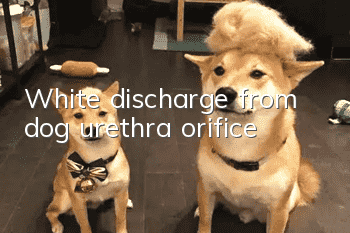What are the symptoms of osteitis in dogs? Can bones also become inflamed?

Symptoms of osteitis in dogs
1. In the early stage, X-ray examination only showed swelling of the soft tissue of the affected part of the dog. About 2 weeks later, the affected bone showed a nibbling-like destruction area and periosteal ossification with blurred edges and unclear boundaries.2. Dogs with chronic osteitis will have reduced bone density in the bone destruction area, and there may be "sequestered bones" in the bone cortex.
3. For dogs with sinusitis, bone fragments may be released during flushing.
Causes of osteitis in dogs
1. Exogenous infection, pathogenic bacteria infect bone tissue through wounds or surgical incisions. Seen in bite wounds, stab wounds, gunshot wounds and open fractures that directly damage bones.2. Caused by the spread of purulent inflammation in the soft tissue around the bone.
3. Blood-borne infection mainly occurs in young dogs. It is an infection caused by pathogenic bacteria from other parts of the body transferred to bone tissue through blood circulation. Common primary infections include umbilical corditis, pneumonia, gastroenteritis, arthritis, etc.
Prevention and treatment measures for dog osteitis
1. Use sufficient antibiotics throughout the body of sick dogs. Broad-spectrum antibiotics are used at the initial stage of the disease and are continued until 1 week after the inflammation disappears.2. If there is a local abscess or if the medication is ineffective for several days, the wound should be expanded to drain the pus and flushed and drained. If there is suspected medullary empyema, surgery should be performed to drill through the bone cortex to drain the pus and reduce pressure. If probing or X-ray examination reveals a "sequestrum" or cavity, surgery will be performed to remove the sequestrum and scrape the sinus wall.
3. If the internal fixation of the fracture is infected, the internal fixation material should not be removed. If the fixation is unstable, the fixation should be strengthened.
4. For dogs with chronic osteomyelitis, systemic medication and local treatment should be adhered to.
5. For those who cannot control inflammation or prevent the spread of inflammation, if it is in the limbs, amputation of the lesion may be considered.
Random articles
- What to do if your dog has double rows of teeth
- Things to note when feeding Teddy dogs
- Signs your dog loves you
- Common dog diseases in winter
- What are the symptoms of rabies in dogs?
- What are the symptoms of false pregnancy in dogs?
- Letting your dog walk upright is very harmful. Don’t let your ignorant interest ruin your dog’s life!
- What should I do if my dog has fleas? How to get rid of fleas on your dog?
- Why should a dog’s tail be docked? What are the reasons for docking a dog’s tail?
- What causes tear stains in dogs and how to improve them



